Covid 19 Informational Project
Recently created a series of illustrations about the SARS-CoV-2 pandemic. I have a Biomedical Sciences degree so I thought it would be really useful to use that knowledge to create some easy to understand Instagram posts with associated illustrations.
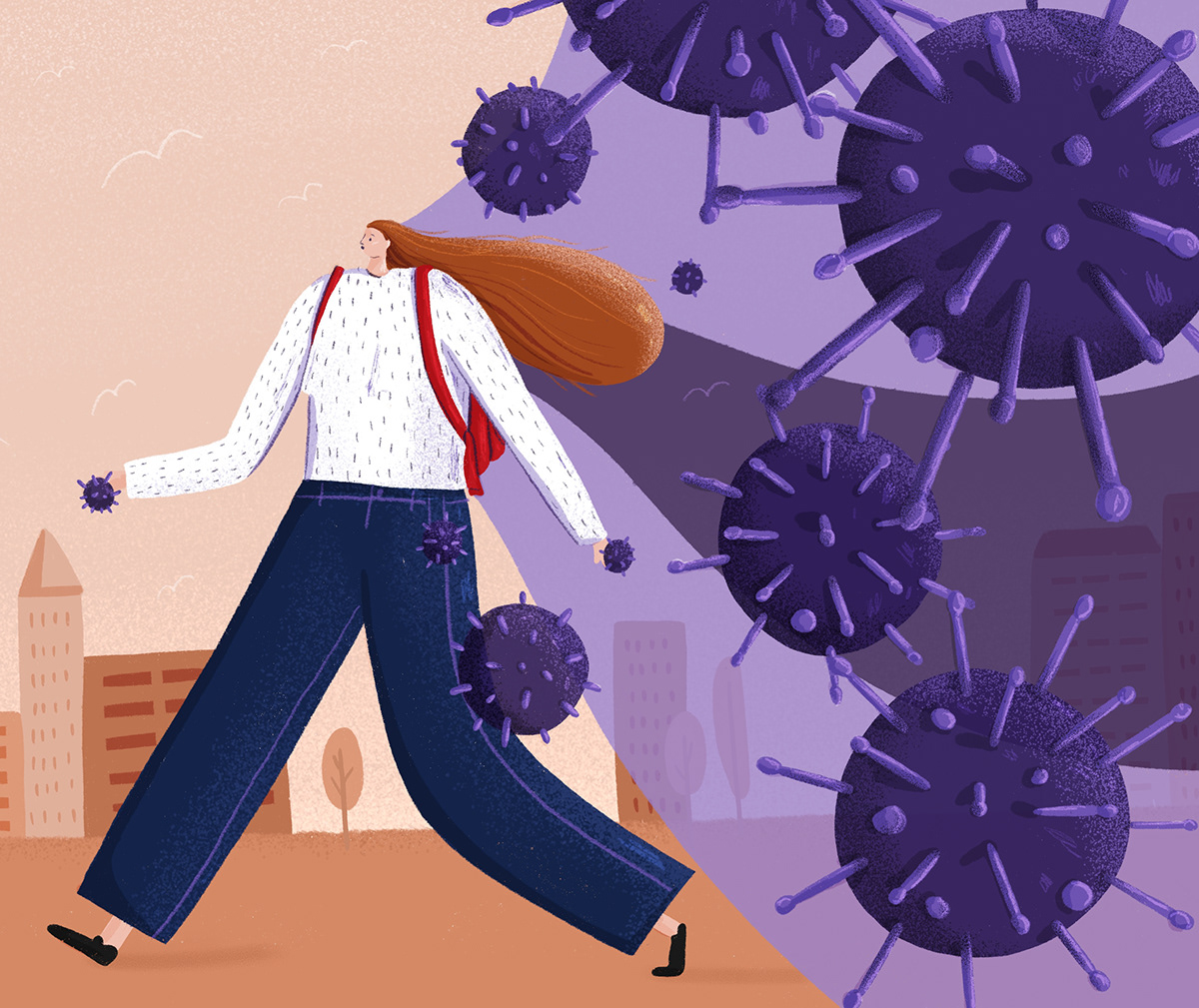
One of the first things I found out was that some/potentially many people have asymptomatic disease, i.e. they may have the virus with no symptoms and can still go on with their day to day and can infect others. Given that the UK government has all but given up on testing in the community, it means a completely unknown number of people may have this and be spreading it unknowingly. My only conclusion from this would be to #stayhome whenever possible, practice #socialdistancing and encourage others to do so too.

This morning I’ve looked at this article on the @medicalnewstoday website about why this new coronavirus is spreading so rapidly (it has been fact checked so it’s a safe source).
Background if biology wasn’t your friend: Cells have a membrane surrounding them which protect their contents and have proteins embedded in them. These proteins make up channels, receptors, enzymes etc and help with the usual functioning of a cell (bringing in food etc). A coronavirus enters the cell by binding to a receptor/enzyme/protein, breaking in, it releases it’s RNA (like DNA), the cell reproduces it and more viruses are created.
SARS-CoV-2 (Covid-19) shares 86% of its genomic sequence with the previous SARS epidemic. The differences, however, are why Covid-19 is more spreadable but thankfully it is not as effective (SARS killed 10% of people infected). Covid-19 is 10x more effective in binding to a cell and this means it’s quicker to reproduce and therefore spread.
Coronaviruses are covered in SPIKE proteins which bind to cell membranes. One of the spike proteins on Covid-19 has a ‘cleavage site’ that is activated by Furin, an enzyme which can be found in cells in the lungs, liver and small intestines (so it could infect any and all of these sites). The spike proteins of Covid-19 also have a specific structure that binds more tightly to the ACE2 receptor (another enzyme on the surface of a cell) than the previous SARS coronavirus which is also what makes it more effective in binding to a cell.
Knowing these two things is really important because it means we can create drugs that target these sites by inhibiting (blocking) the proteins on our cells to stop the virus from entering the cell and reproducing!
Background if biology wasn’t your friend: Cells have a membrane surrounding them which protect their contents and have proteins embedded in them. These proteins make up channels, receptors, enzymes etc and help with the usual functioning of a cell (bringing in food etc). A coronavirus enters the cell by binding to a receptor/enzyme/protein, breaking in, it releases it’s RNA (like DNA), the cell reproduces it and more viruses are created.
SARS-CoV-2 (Covid-19) shares 86% of its genomic sequence with the previous SARS epidemic. The differences, however, are why Covid-19 is more spreadable but thankfully it is not as effective (SARS killed 10% of people infected). Covid-19 is 10x more effective in binding to a cell and this means it’s quicker to reproduce and therefore spread.
Coronaviruses are covered in SPIKE proteins which bind to cell membranes. One of the spike proteins on Covid-19 has a ‘cleavage site’ that is activated by Furin, an enzyme which can be found in cells in the lungs, liver and small intestines (so it could infect any and all of these sites). The spike proteins of Covid-19 also have a specific structure that binds more tightly to the ACE2 receptor (another enzyme on the surface of a cell) than the previous SARS coronavirus which is also what makes it more effective in binding to a cell.
Knowing these two things is really important because it means we can create drugs that target these sites by inhibiting (blocking) the proteins on our cells to stop the virus from entering the cell and reproducing!
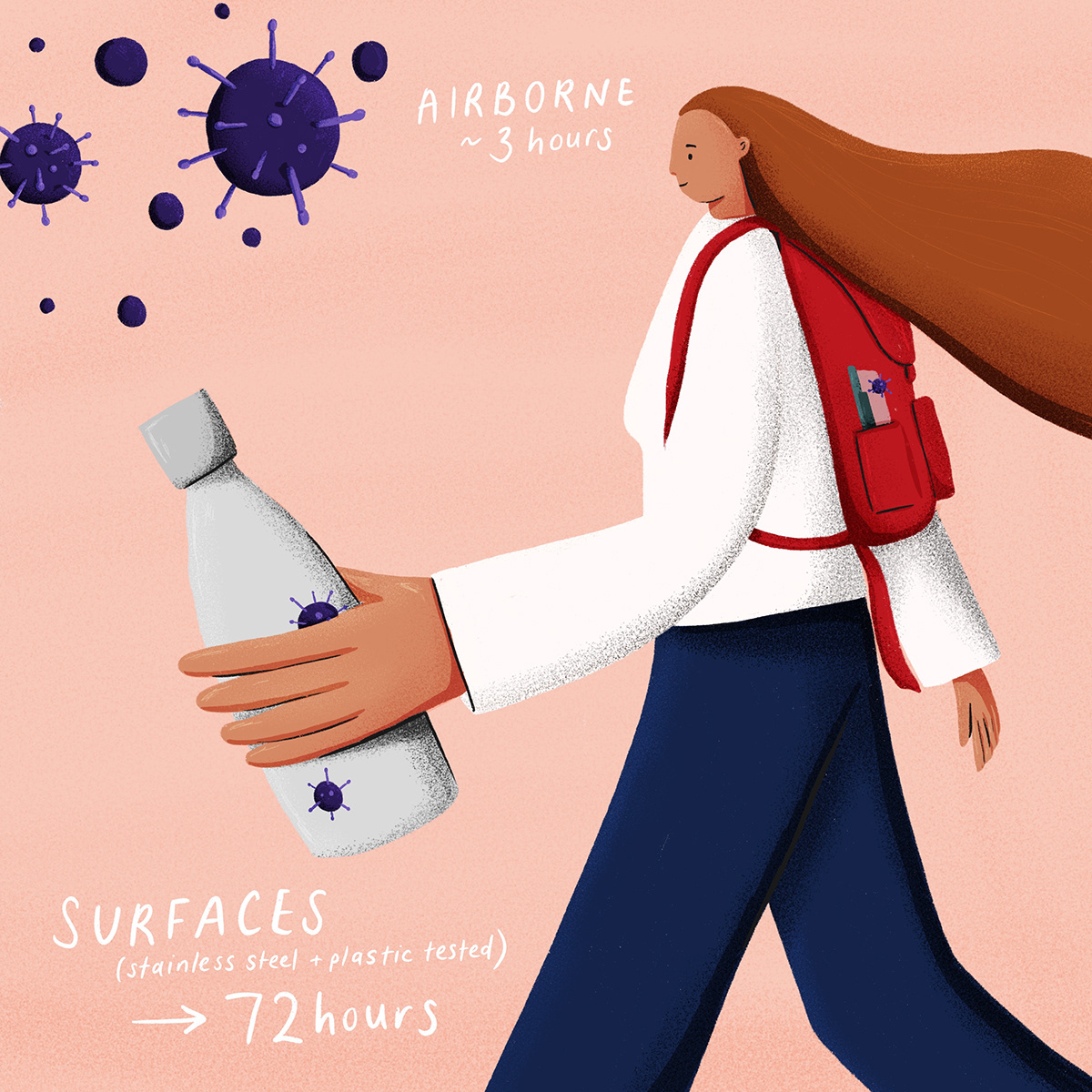
Today I’ve looked at a letter published by the New England Journal of Medicine which looks at how long the virus is viable for on different surfaces. I noticed a post on Facebook in the past week that was completely incorrect, so their findings are the following:
Aerosol (airborne) for 3 hours
Copper for 4 hours (copper is well known for its antibacterial/antiviral properties)
Cardboard for around 12 hours (although this was inconclusive)
Stainless Steel for 72 hours
Plastic for 72 hours
Aerosol (airborne) for 3 hours
Copper for 4 hours (copper is well known for its antibacterial/antiviral properties)
Cardboard for around 12 hours (although this was inconclusive)
Stainless Steel for 72 hours
Plastic for 72 hours
So depending on the amount of virus a person ‘sheds’, there is evidence to suggest Covid-19 could be transmitted in airborne particles and on surfaces. Given that people can have asymptomatic disease (have no symptoms), it’s very important to follow the advice - stay home as much as possible and practice social distancing!
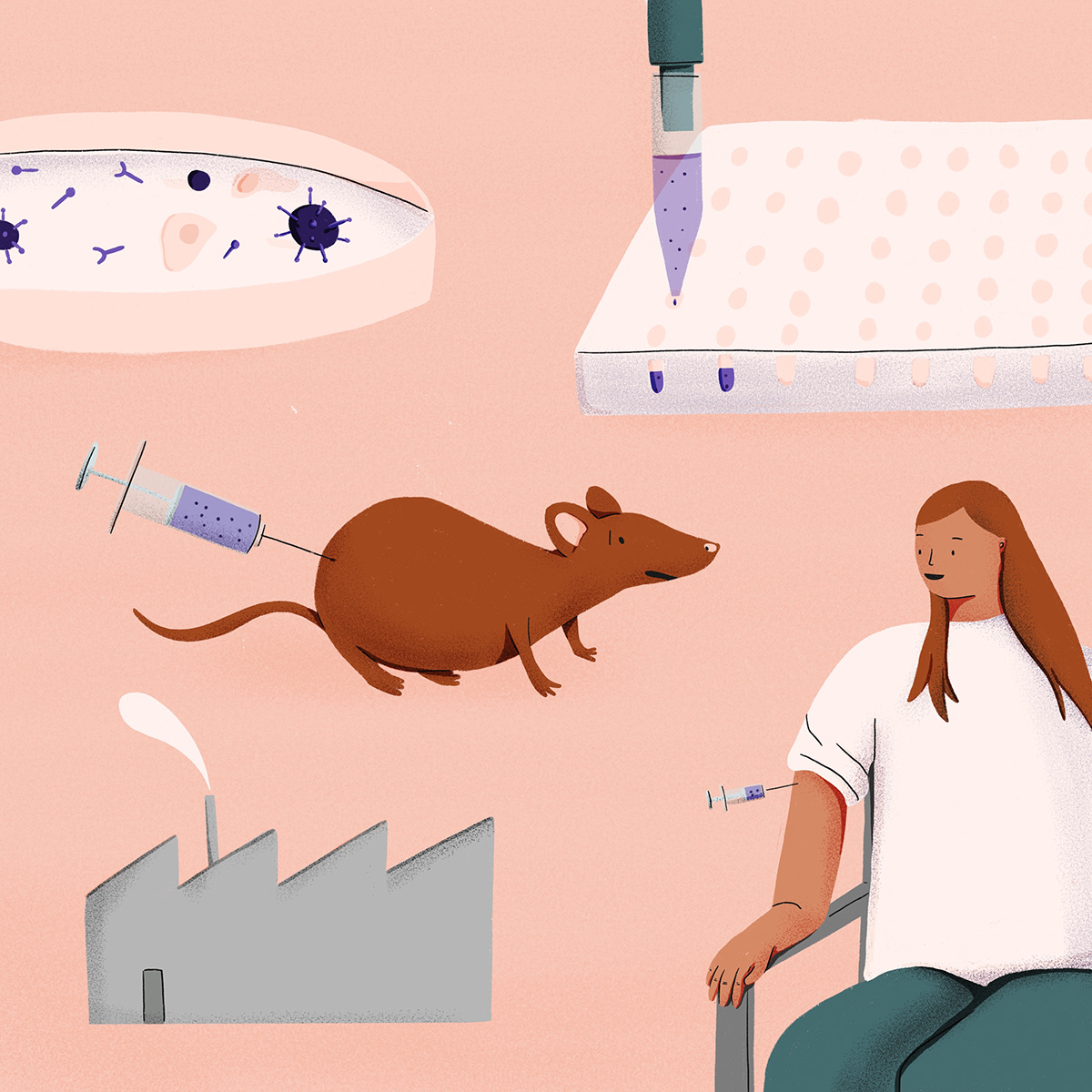
After a long day of deadlines (I’m incredibly thankful I still have at least some work)... looking at vaccines today and why they take a long time to develop.
So to develop a vaccine it goes through the process below:
1. Research, looking at identifying the antigens (like those spike proteins on the surface) or by using an inactive/reduced potency virus. They also mix with other specialised molecules which can improve the body’s immune response.
2. Next up is preclinical testing, this will start as in lab tests and followed by testing on animals. This is iterative, if it works - great, if not, the mixture will be changed and tested again. Up to here can usually take up to 10 years.
3. Clinical testing is next (i.e. testing on humans), these go through different phases starting with a small group, increasing to larger groups of people. Throughout this, the immune response is tested over time to check it’s working and safe for humans to receive, whether we need more than one booster etc. This can take 2-3 years.
4. The vaccine is then approved by regulators like the EU, they approve based on all the data from tests.
5. Once approved, the vaccine is manufactured and transported where it needs to be. Given that the entire world needs a vaccine...
So to develop a vaccine it goes through the process below:
1. Research, looking at identifying the antigens (like those spike proteins on the surface) or by using an inactive/reduced potency virus. They also mix with other specialised molecules which can improve the body’s immune response.
2. Next up is preclinical testing, this will start as in lab tests and followed by testing on animals. This is iterative, if it works - great, if not, the mixture will be changed and tested again. Up to here can usually take up to 10 years.
3. Clinical testing is next (i.e. testing on humans), these go through different phases starting with a small group, increasing to larger groups of people. Throughout this, the immune response is tested over time to check it’s working and safe for humans to receive, whether we need more than one booster etc. This can take 2-3 years.
4. The vaccine is then approved by regulators like the EU, they approve based on all the data from tests.
5. Once approved, the vaccine is manufactured and transported where it needs to be. Given that the entire world needs a vaccine...
This whole process can take up to 18 years and needs to be safe so speeding up this process to 12-18 months is pretty good!
A vaccine provides immunity to a disease/illness as the immune system amounts an immune response to the inactive virus/antigens to get rid of them but it doesn’t make you sick (as it’s inactive). Your immune system is able to ‘remember’ antigens it has previously come across. The immune system can then react to the virus a lot quicker if it comes in contact with it again and eliminate it before it makes you sick! Go vaccines! 💉
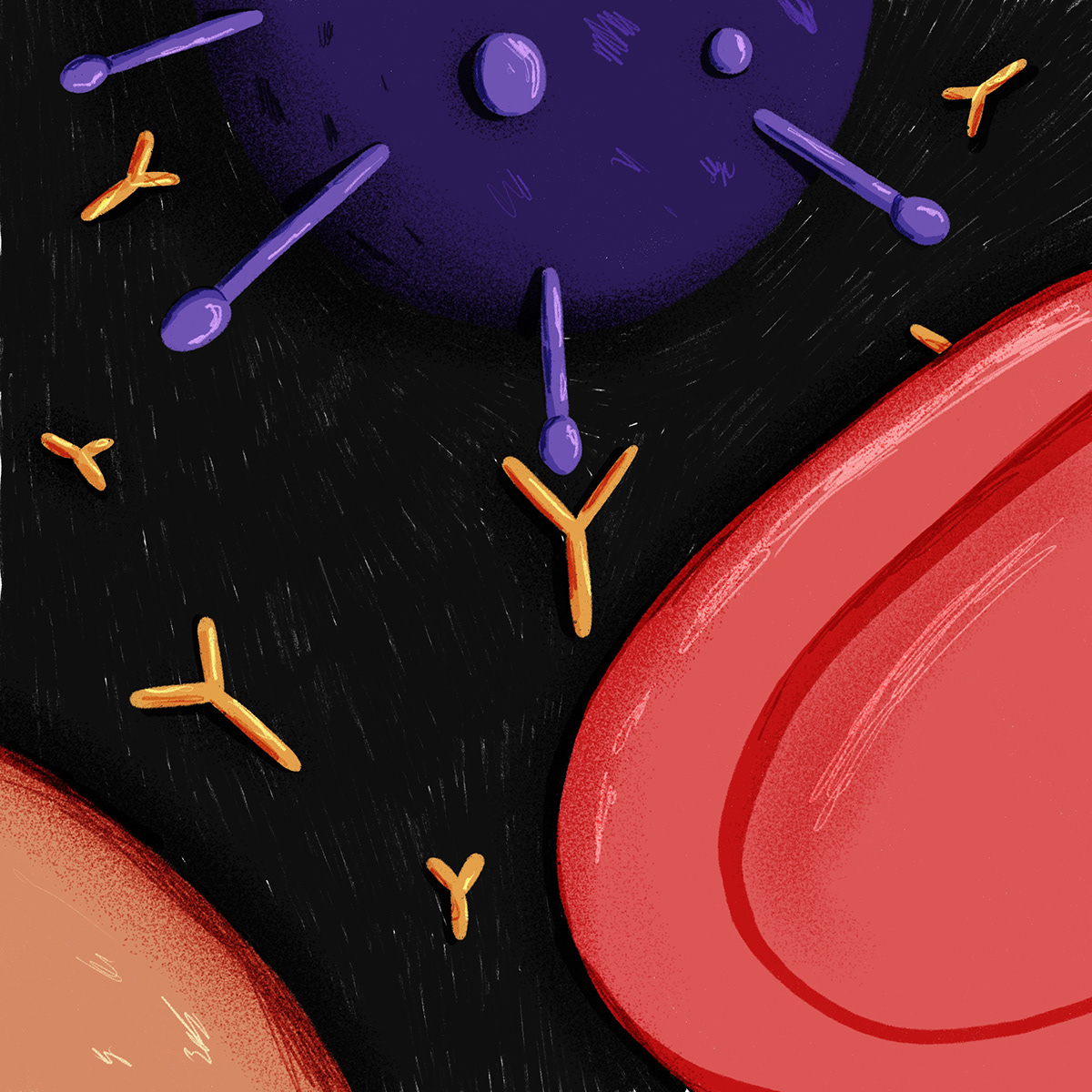
The difference between Antigens and Antibodies.
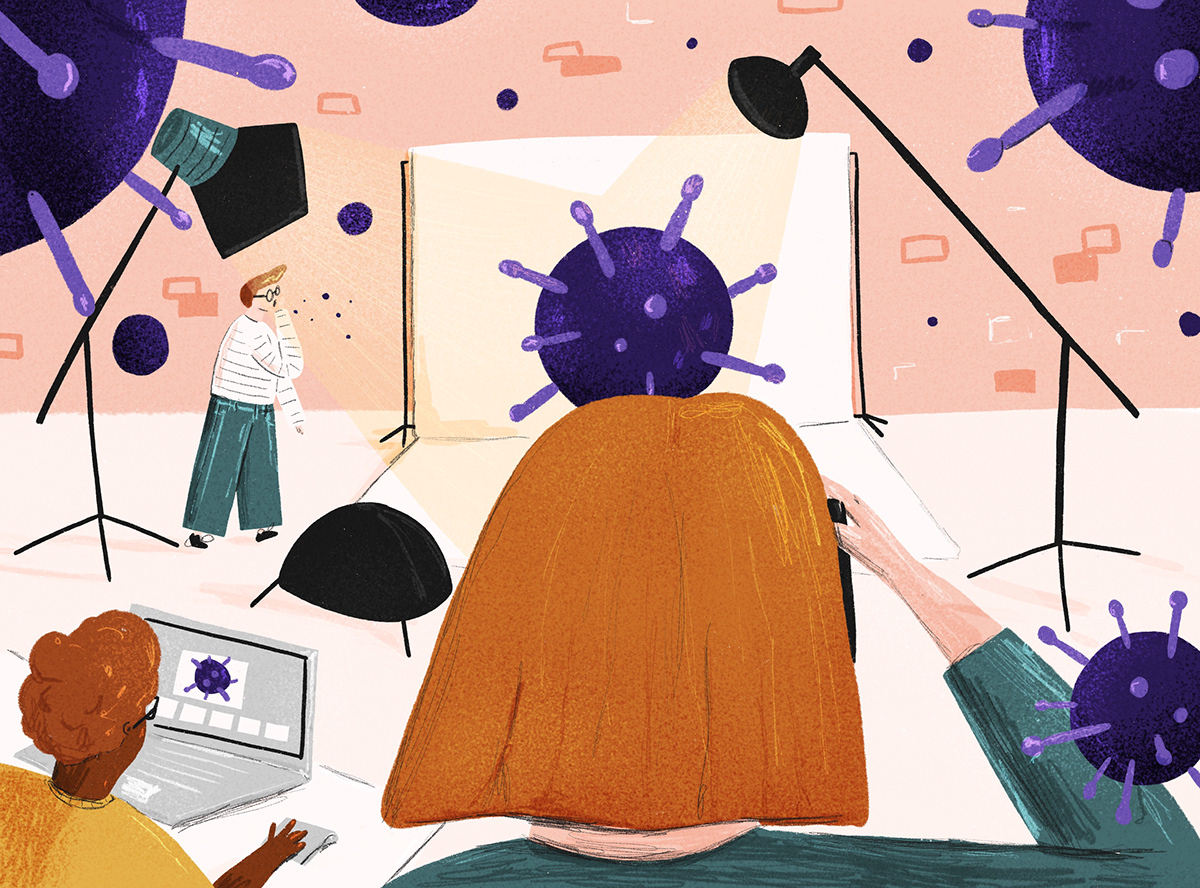
Other illustration created about using illustration while photoshoots aren't possible.

